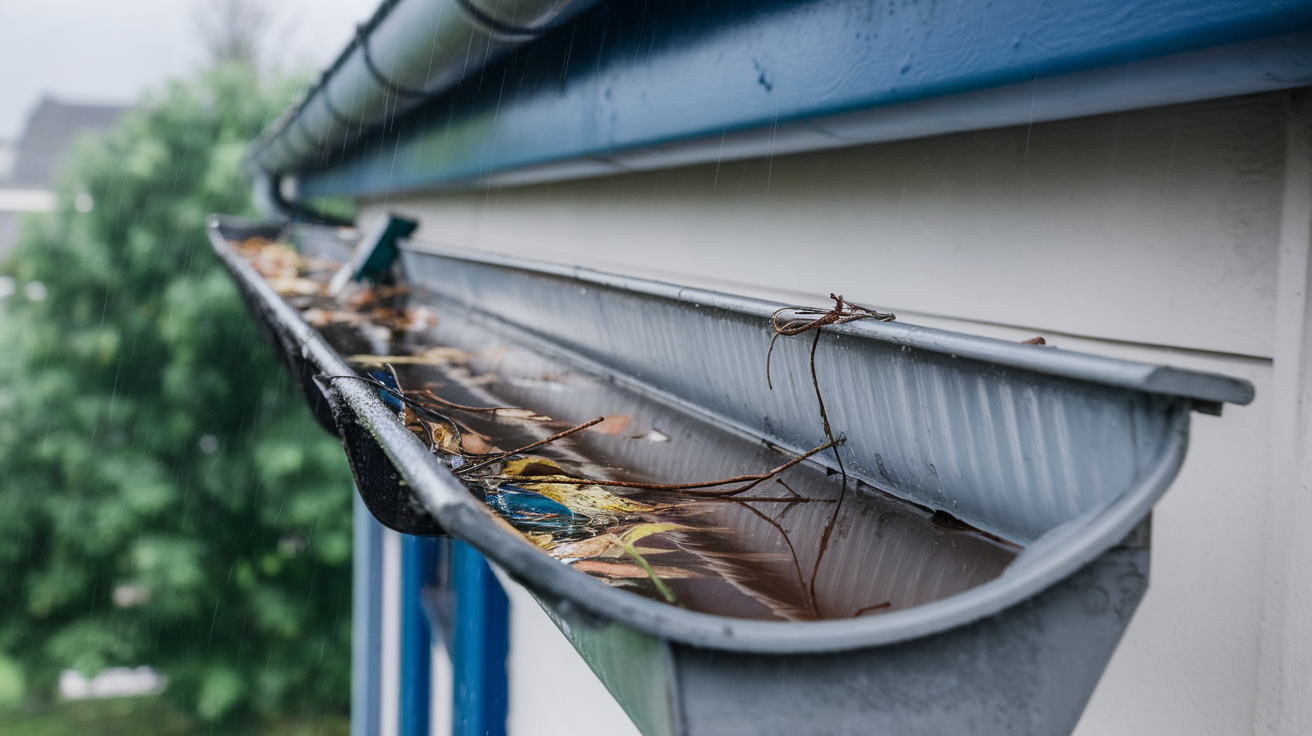Are you unsure about which gutters are best for your home? Choosing the right gutters is more important than you might think.
A few years ago, I skipped cleaning out my gutters after a heavy fall, and it led to a clogged system.
The result? Water overflowed and flooded my basement, costing me thousands in repairs. In this blog, I’ll guide you through the different types of gutters, from traditional styles to modern, hidden options for a sleek look.
I’ll also cover materials like Aluminum, Vinyl, and Copper to help you make a decision that fits both your needs and budget.
By the end, you’ll know which gutter system will keep your home safe and dry and save you from costly repairs like I faced.
Why do Gutters Matter?
Gutters are more critical than you might think. Without them, rainwater has nowhere to go, and it can cause a lot of damage to your home.
When water overflows from your roof, it can seep into your walls, foundation, and even your basement.
This leads to problems like mold growth, rotting wood, and cracks in your foundation. Over time, these issues can get really expensive to fix.
Properly installed gutters help prevent these problems by directing water away from your home.
In short, gutters are a simple yet essential part of keeping your home dry, safe, and structurally sound.
Types of Gutters
There are a few common types of gutters, each with its own set of advantages and disadvantages. Understanding their differences helps you choose the right one for your home.
Let’s have a look at the most popular options.
1. K-Style Gutters
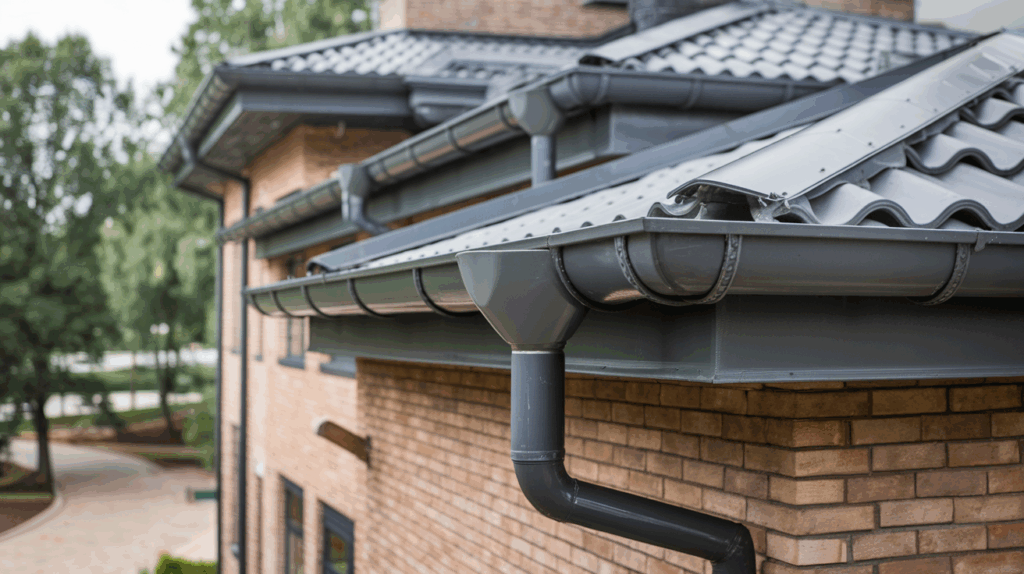
K-style gutters are the most common type you’ll see in many modern homes. They have a flat bottom with a decorative “K” shape on the front, giving them a clean, structured look.
These gutters can handle a lot of water, making them perfect for larger roofs. Standard sizes for K-style gutters are usually 5 inches or 6 inches wide, with larger sizes available for homes with higher rainfall.
I’ve found them to be practical and easy to maintain, with plenty of color options to match your home’s exterior.
Pros:
- Affordable and easy to install.
- Available in various materials like aluminum and vinyl.
- Works well for both large and small roofs.
Cons:
- Prone to clogging if not maintained regularly.
- It may not blend with older or traditional home styles.
- Can be more prone to denting under pressure.
2. Box Gutters
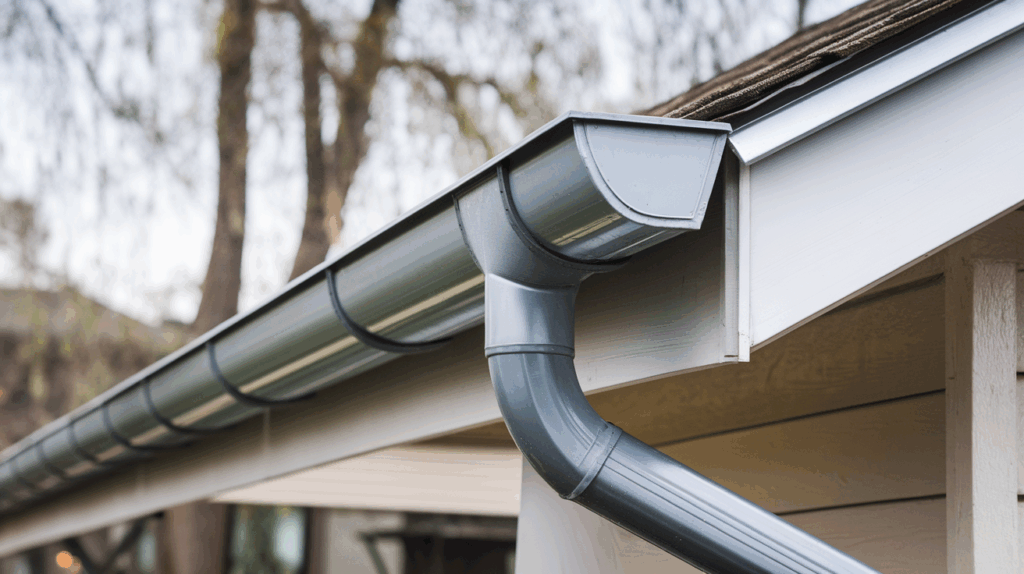
Box gutters are a bit different from others, as they’re built directly into the roofline, creating a box-like shape. They offer a more seamless appearance because they’re hidden, blending in with the roof.
They come in various sizes, but most commonly, they are 5 to 7 inches wide. These gutters tend to be more durable and are often found in older or more traditional homes.
Since these gutters are built-in, they give the roofline a cleaner, more refined look.
Pros:
- Built-in, so they don’t detract from the home’s look.
- Great for handling large volumes of water.
- Low maintenance if properly installed.
Cons:
- More expensive and difficult to install.
- Requires regular cleaning to avoid clogging.
- Repairs can be more complicated due to their construction.
3. Half-Round Gutters
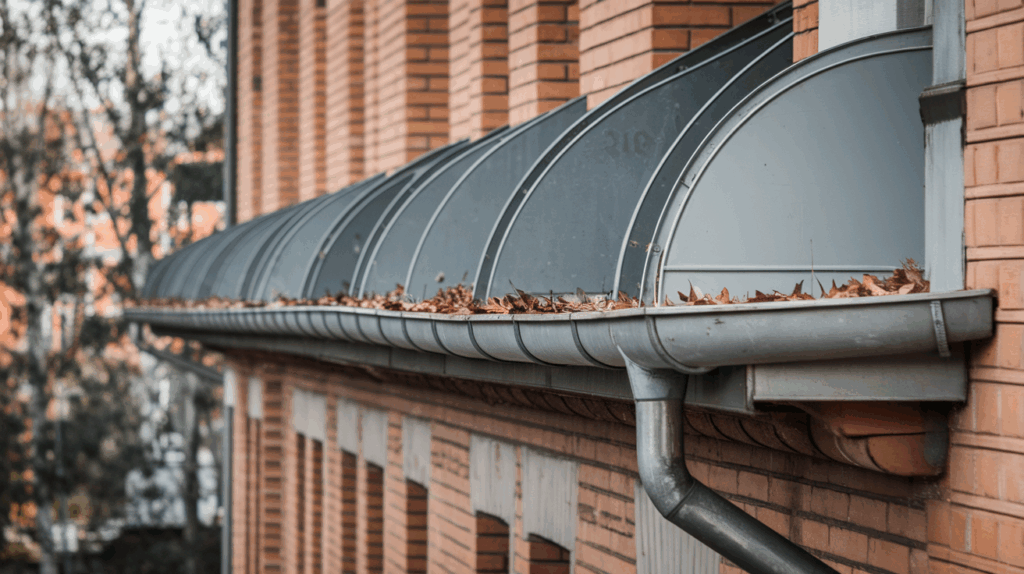
Half-round gutters are exactly what they sound like: shaped like a half-tube. They have a smooth, curved appearance that’s often seen in older or historic homes.
These gutters are usually made from copper or aluminum and come in 5 to 6-inch sizes. I’ve always liked how their simple shape allows water to flow more freely, reducing the risk of clogs.
They have a classic, timeless appeal and are durable if taken care of.
Pros:
- Offers a more traditional, rounded appearance.
- Less prone to clogging due to smooth, curved design.
- Durable and long-lasting.
Cons:
- They are not as common, so they may not blend with all home styles.
- Requires more frequent cleaning compared to K-style gutters.
- More expensive to install.
4. Seamless Gutters
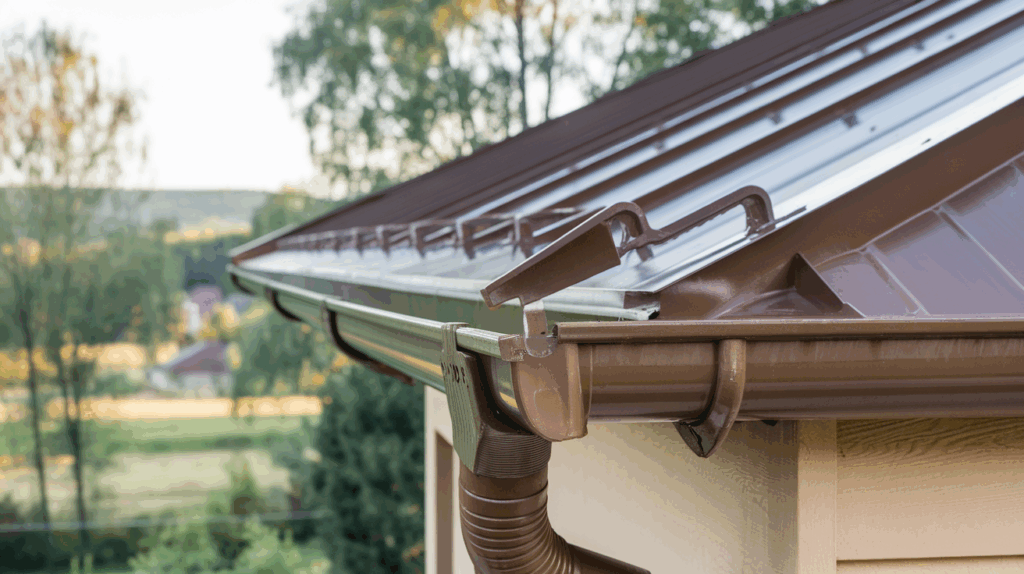
Seamless gutters are custom-made on-site, which means they don’t have seams or joints, reducing the risk of leaks. These gutters are made to fit your roofline perfectly, making them a tailored option for your home.
The standard size for seamless gutters is typically 5 inches, but they can be made larger if needed. I’ve found that they require less maintenance and are less likely to leak compared to sectional gutters.
Their smooth, continuous look is one reason many homeowners prefer them.
Pros:
- Fewer seams mean fewer chances for leaks.
- Custom-sized for a more tailored fit.
- Minimal maintenance once installed.
Cons:
- Requires professional installation, making them more expensive.
- They are harder to repair if damaged, as they’re one continuous piece.
- Not available in all materials.
Which Gutter Is Best for Your Home?
| Gutter Type | Best For | Key Features |
|---|---|---|
| K-style Gutters | Modern homes | It is highly functional and a common design for most homes. |
| Box Gutters | Historic or architectural homes | Hidden gutters are often integrated into the roofline. |
| Half-round Gutters | Homeowners seeking a classic or traditional look | Curved design, often used for a more vintage appearance. |
| Seamless Gutters | Homeowners looking for low-maintenance, leak-resistant gutters | Custom-fit, fewer joints, reduces the risk of leaks. |
Pro Tip: Clean your gutters at least twice a year to prevent clogs and water damage. This simple step can extend the life of your gutters and protect your home from water damage.
Different Types of Gutter Materials
When choosing the right material for your gutters, consider factors like durability, cost, and how well it suits your home’s needs. Let’s take a look at the most common gutter materials:
1. Aluminum Gutters
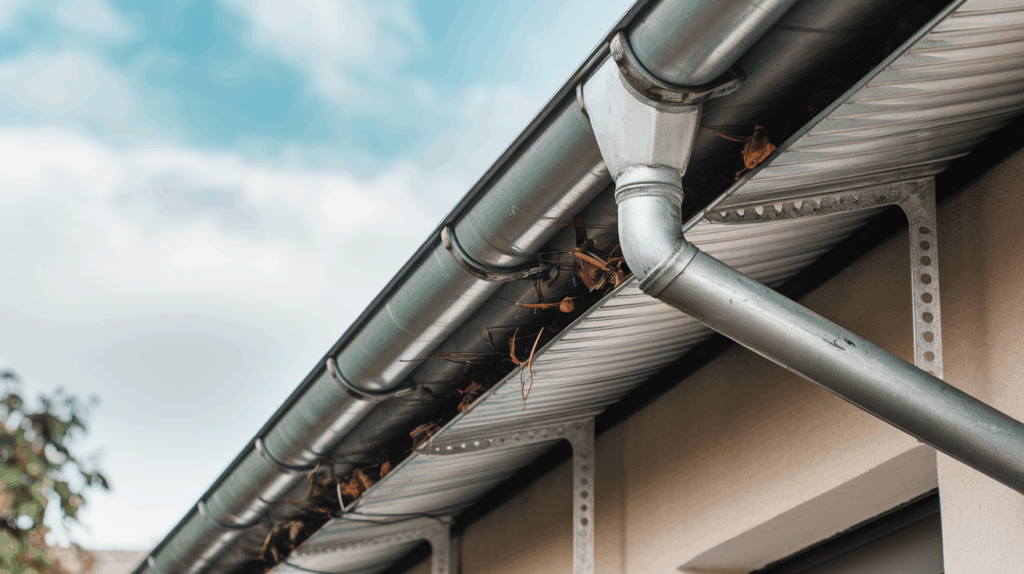
Aluminum gutters are lightweight, rust-resistant, and come in a wide range of colors. They have a smooth, sleek look that fits most home styles.
I’ve found that they’re easy to install and don’t require much maintenance, making them a popular choice. They’re also more affordable compared to other materials, which is great if you’re on a budget.
However, aluminum gutters can dent more easily if exposed to heavy impacts, such as falling branches.
Best For: Homeowners looking for an affordable, easy-to-install option that works well in most climates.
2. Copper Gutters
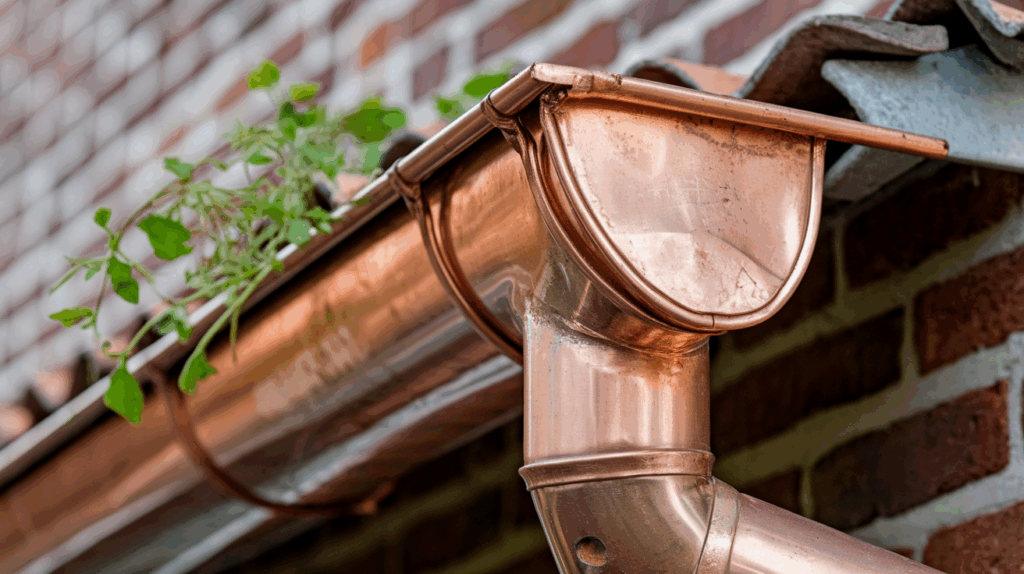
Copper gutters are known for their premium, elegant look that can make any home stand out. Over time, copper develops a green patina, giving it an antique feel.
I’ve always liked how stylish and durable copper gutters are, though they come with a higher price tag. The biggest downside is that copper gutters can be costly to install, which may not fit every budget.
Best For: Homeowners looking for a premium, long-lasting material with a stylish finish.
3. Vinyl Gutter
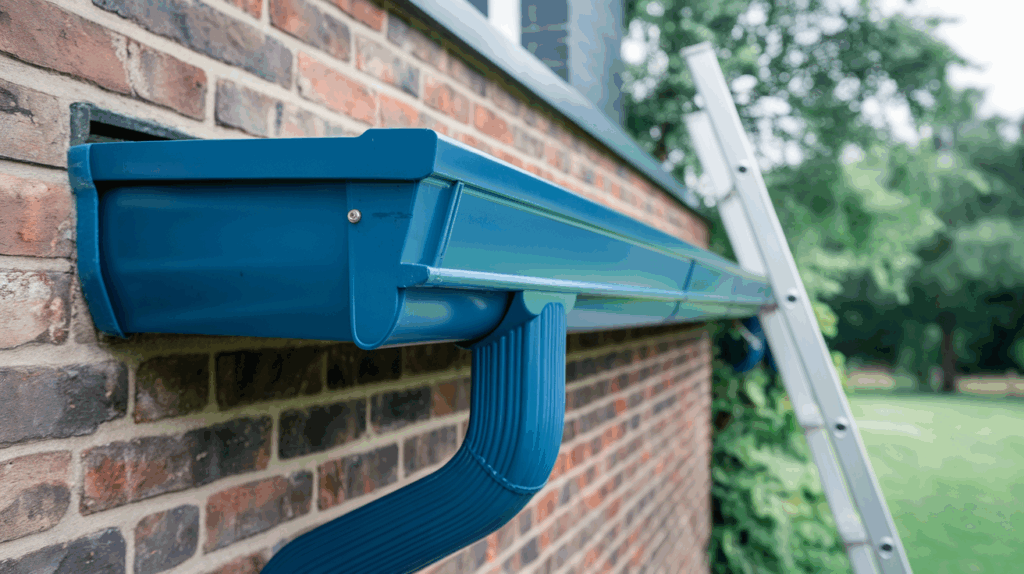
Vinyl gutters are budget-friendly and come in a variety of colors. They are lightweight, easy to install, and resistant to rust and corrosion, making them a solid choice for many homes.
I’ve found them to be great for DIY projects since they don’t require professional installation. However, vinyl gutters can become brittle and crack over time, especially in extreme weather conditions.
Best For: Homeowners looking for an affordable, low-maintenance gutter system, particularly in milder climates.
4. Steel Gutters
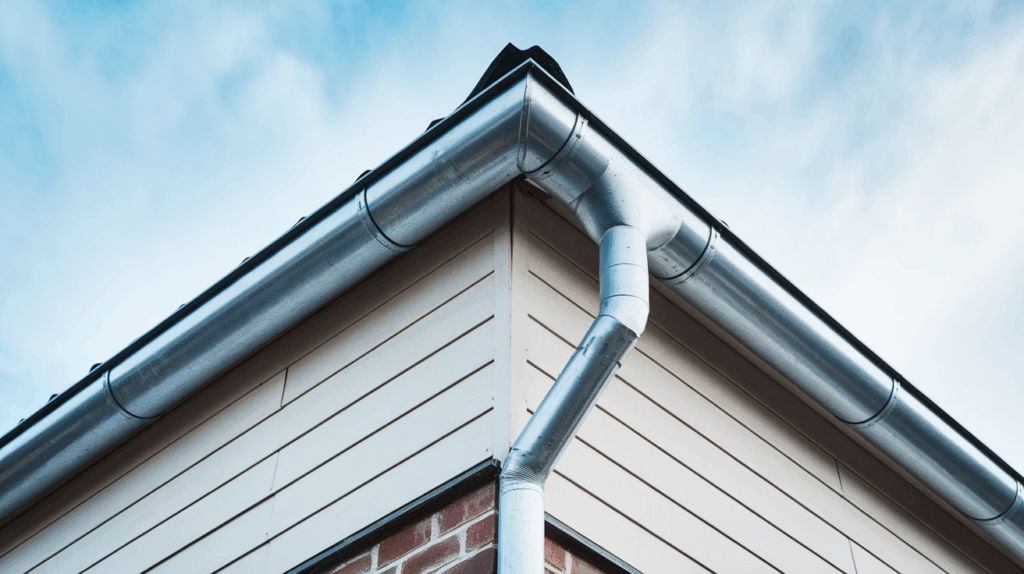
Steel gutters are strong, sturdy, and capable of handling heavy rain and snow. They usually come in galvanized or stainless steel and have a smooth, metallic finish.
Steel gutters are very durable and resistant to wear and tear. However, they can be prone to rusting over time, especially if not properly maintained, which can affect their longevity.
Best For: Homeowners in areas with heavy rainfall or snow who need a tough, long-lasting gutter system.
5. Zinc Gutters
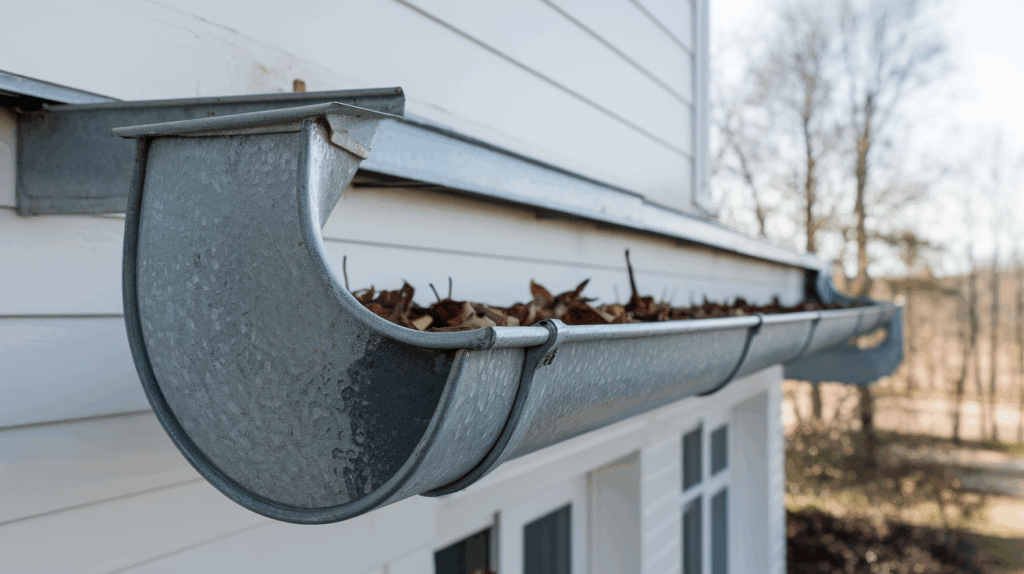
Zinc gutters have a unique, natural gray finish that gradually changes into a beautiful patina as they age, adding character to a home. They are incredibly durable and last for decades without rusting.
Zinc gutters require very little maintenance, making them a long-term investment. However, they can be on the expensive side compared to other gutter materials.
Best For: Homeowners who want a long-lasting, low-maintenance option with a distinctive, aging look.
Each material offers distinct benefits depending on your budget, the climate where you live, and the look you’re going for.
How Much Does Gutter Installation Cost?
The cost of gutter installation depends on several factors, including the material, the size of your home, and your location. On average, gutter installation costs range from \$4 to \$30 per linear foot.
| Material | Price per Linear Foot |
|---|---|
| Vinyl | $3 – $8 |
| Aluminium | $5 – $15 |
| Steel | $8 – $20 |
| Copper | $20 – $40 |
| Zinc | $18 – $40 |
Average Total Gutter Installation Cost (including Material and Labour):
- Small Homes: $1,200 – $2,500
- Average Homes: $2,500 – $6,500
- Large Homes/premium Materials: $6,500 – $12,000+
Hidden or Rare Types of Gutters You Should Know
There are some gutter types that aren’t as common but can be ideal for specific needs or unique home styles. Let’s explore a few of these rare options and why they might be a great fit for your home.
1. FRP Gutters (Fiberglass Reinforced Plastic)
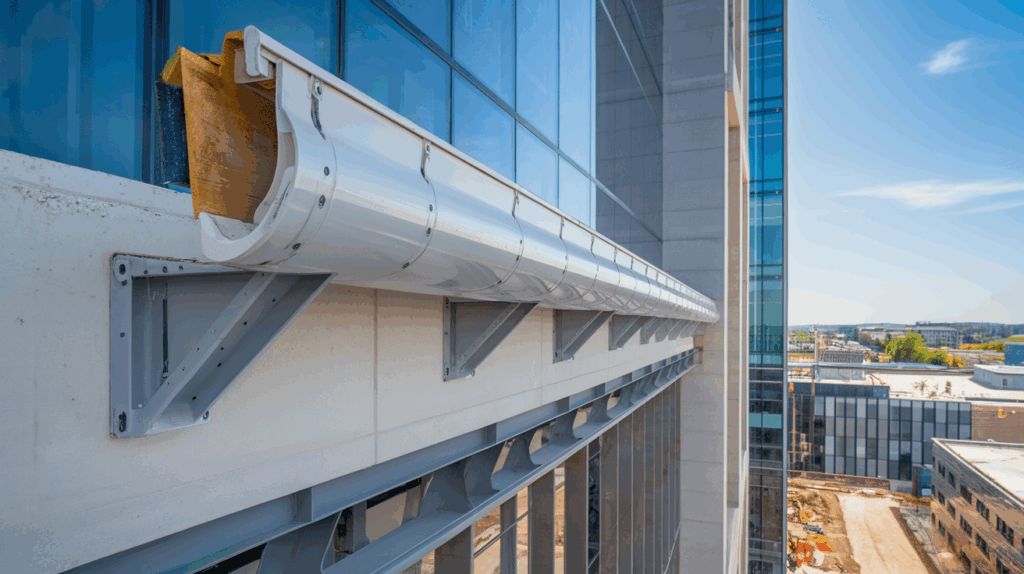
FRP gutters are made from a mix of fiberglass and plastic, making them lightweight but strong. They are rarely used because they’re more expensive than typical materials, but they’re resistant to rust, corrosion, and UV damage.
I’ve found these gutters to be a great choice for coastal areas or places with high humidity where rust is a problem.
Their durability is impressive, but you’ll likely need a professional to install them, and they can be harder to find in local stores.
2. Custom Wood Gutters
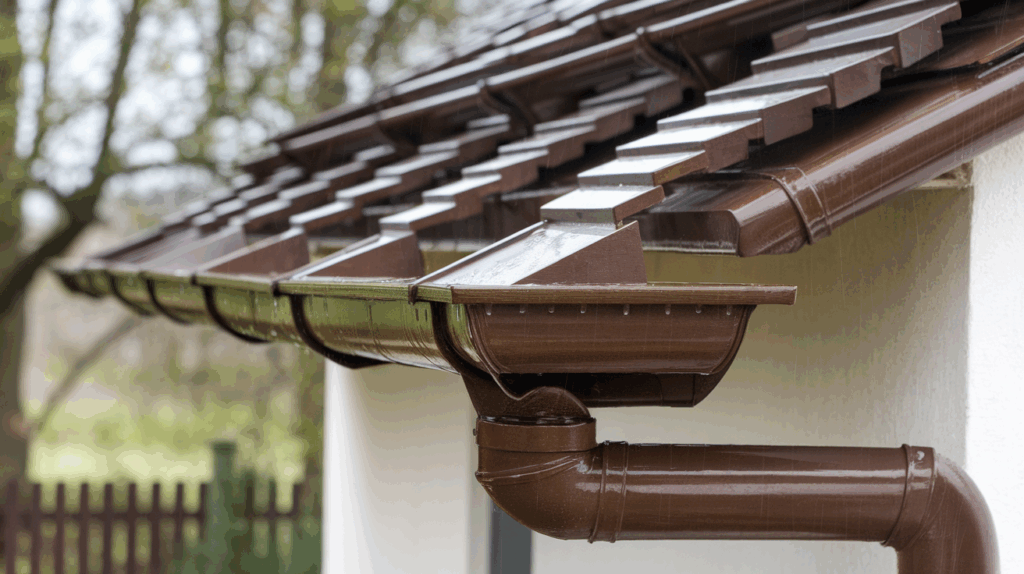
Custom wood gutters are crafted by hand and are unique to the home’s style. They’re often used in historic or period homes and add a classic touch.
They need to be regularly sealed to prevent rotting, and they come with a high price tag due to the custom craftsmanship involved. Despite that, they give your home a distinct, old-world beauty.
I love how these gutters look, but they’re rarely used because they require more care and maintenance than other materials.
3. Concealed Gutters
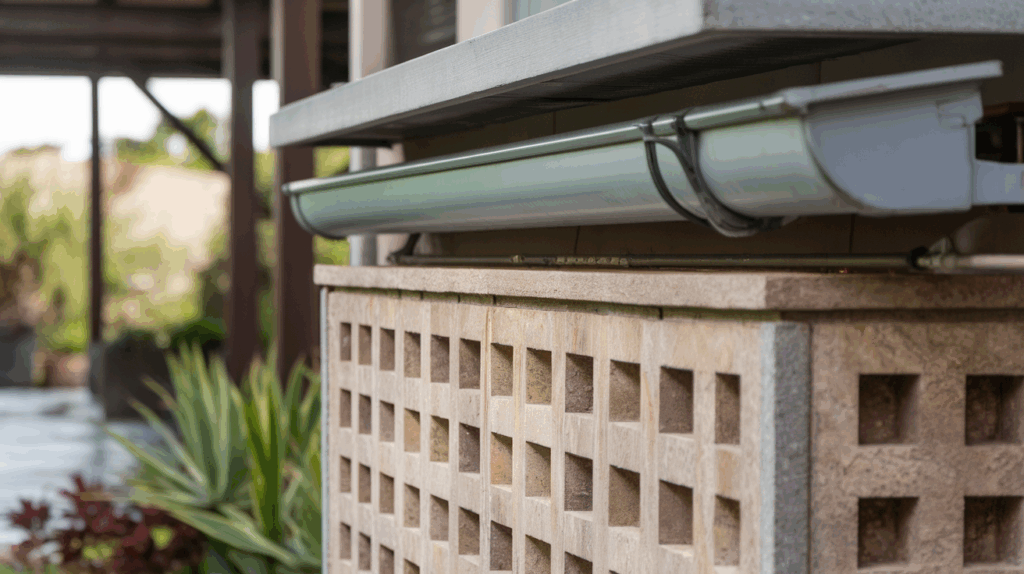
Concealed gutters are built into the roofline, making them practically invisible from the ground. They’re often used for modern or minimalist designs where a clean, sleek look is desired.
I think concealed gutters are unique because they offer a smooth, uninterrupted roofline, but their rarity comes from the complex installation process and the difficulty of cleaning and maintaining them.
These gutters tend to be more expensive and require professional installation.
Conclusion
Now that you know the different types of gutters, materials, and installation costs, I hope you feel more confident in making the right choice for your home.
Gutters are an important part of protecting your property from water damage, and the last thing you want is to deal with leaks or flooding down the road.
By considering your budget, the durability of each material, and how well it fits your home’s needs, you can avoid these costly issues.
Remember, regular maintenance is key to keeping your gutters functioning properly and protecting your home from water damage in the long run.

